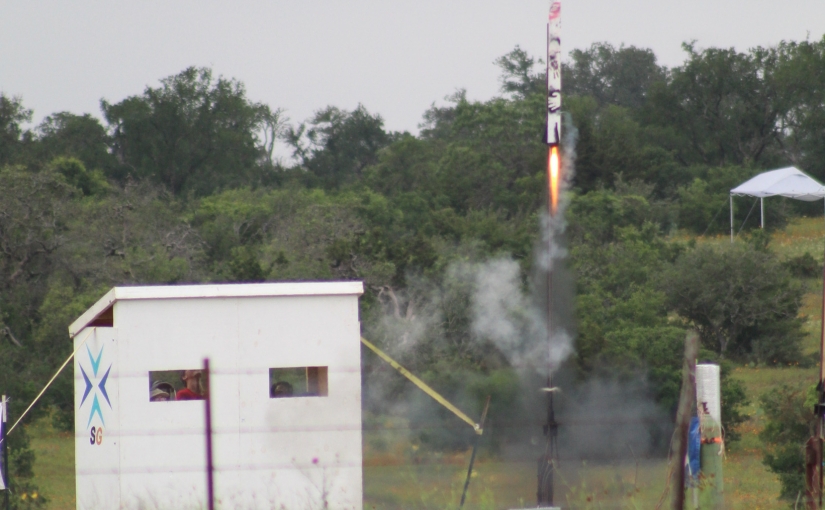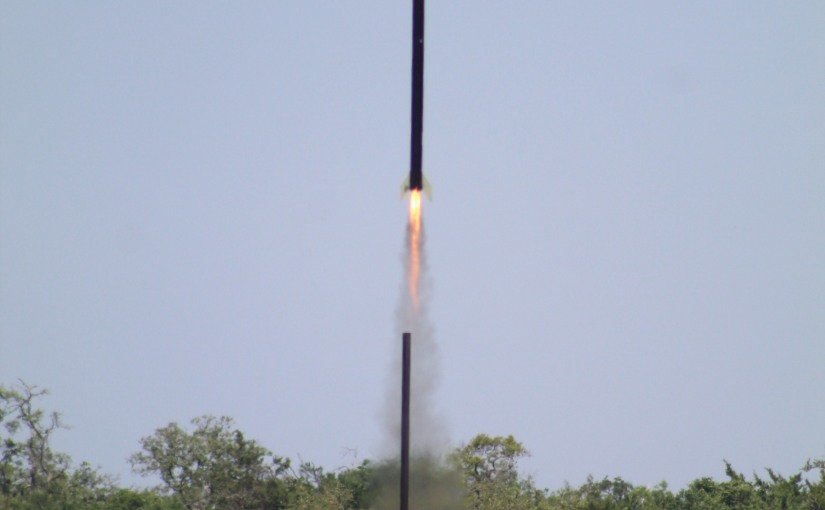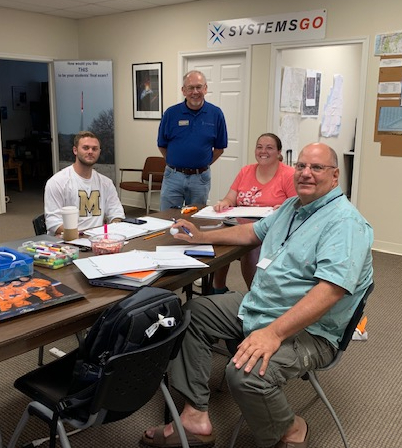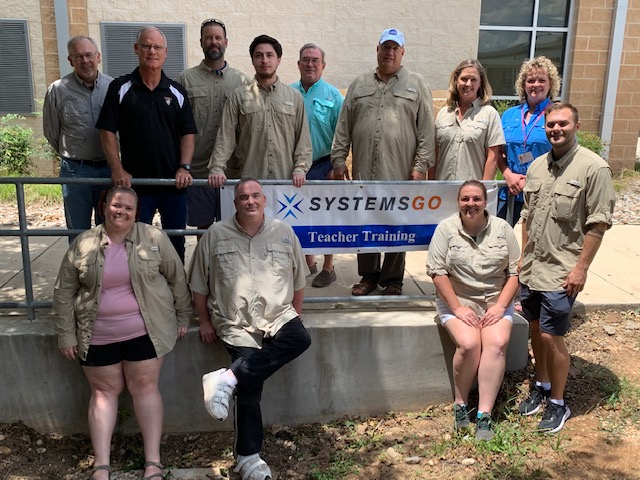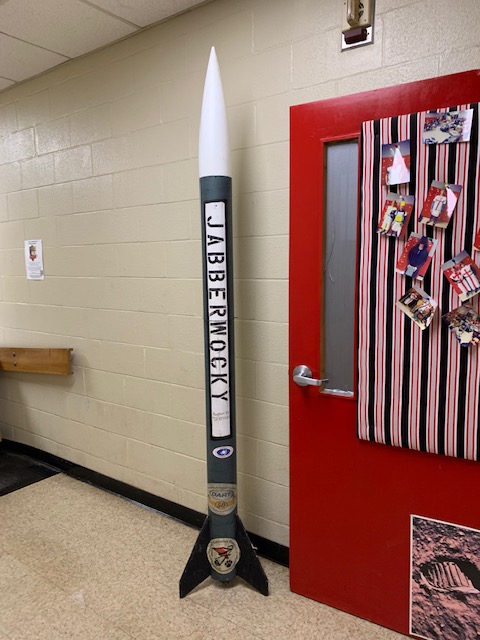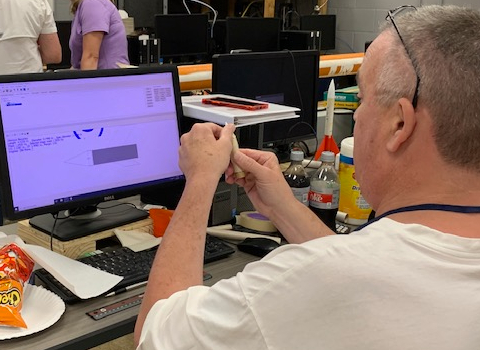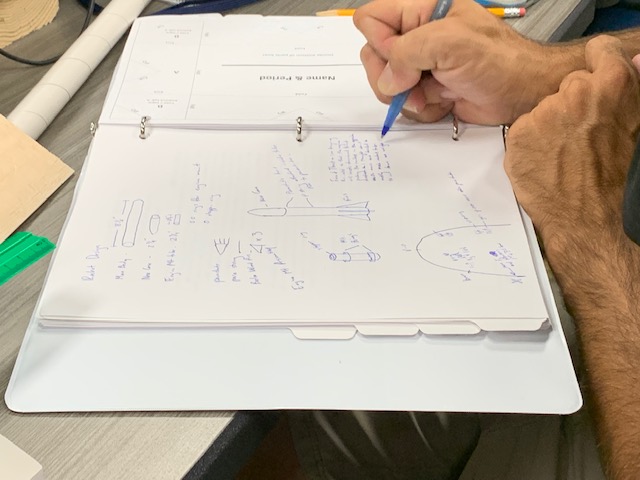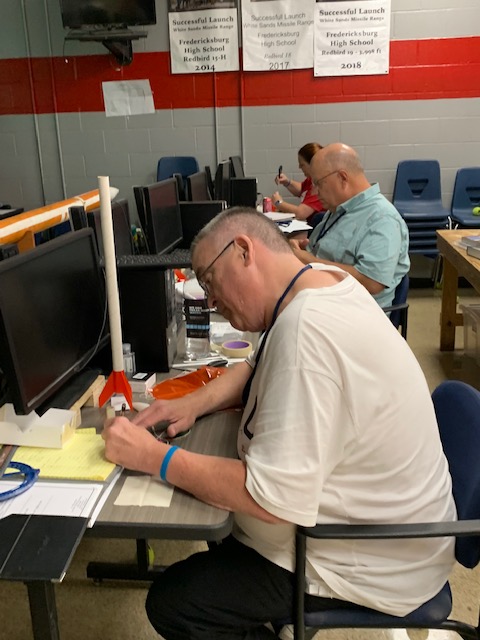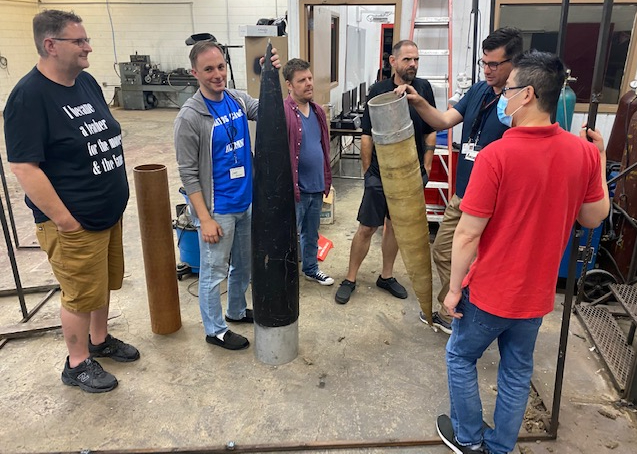Rockets 2024, Central Texas/Stonewall Edition, continued today. The original schedule listed 27 rockets for today. 23 were left from yesterday that were unable to launch due to weather. The plan had been to try to get some of yesterday’s off the rails while waiting for today’s to move through from Stage 1 to Stage 3. The weather again did not cooperate so when a launch opportunity finally opened up at 2:20 this afternoon we started with those who were present and ready from today’s docket.
The first volley consisted of 3 successful launches and recoveries. The next volley of 4 involved three from today and one, #68 from yesterday. All had beautiful flights, but unfortunately went unrecovered as 2 are believed to be on the Iron Game Ranch and 2 more on the Klein property across the road. We did not have permission to enter those properties today, but will later in the weekend and they may be recovered at that time.

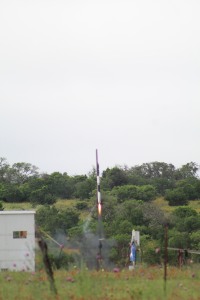




Tomorrow only 7 rockets are on the schedule, but we still have 22 left from Thursday, and 17 left from today. That sets the grand total still to be launched to 46. Once again if we get better weather and an opening in the clouds before those 7 for tomorrow are ready, we will fill in the time with some of our holdovers from yesterday and today. If our 7 are ready when the sky is ready, then they are up first. Either way we will try to launch as many as weather permits tomorrow.
Program Director, Rebekah Hyatt has already made plans with teachers, volunteers(as available) and land owners to launch on Monday and Tuesday to try to get all vehicles tested if weather permits. Hopefully it does not come to that, but unfortunately the current weather reports are not in our favor. After tuesday the team has to transition to Anahuac/Smith Point for the SETX launches.
Test vehicles like these often push the time schedules all on their own. Vent hoses, o rings, altimeter switches, and a host of other issues can send a rocket on numerous trips from pad back to Stage 3 and back again. Weather, as we have all seen again this year effects the schedule as well. We have been under Severe weather watches all weekend, and the possibility is still there. It has not been on our side so far this weekend, let us hope tomorrow shows us a brighter day, will hold off the rain and lift the cloud ceiling until we are done. The team would like to call it complete and not go into one or maybe more days of contingency.
After the completion of this weekend’s launches be it tomorrow or later, the Texas Rocket Trail will move to Smith Point in Anahuac, down in the Houston area for the final leg of the season before the spring launches end for another year.
Pictures from the day’s events are on SystemsGo Facebook page, as well as my Facebook page. They can be found here:
https://www.facebook.com/SystemsGoEducation/
https://www.facebook.com/ginger.burow
Tomorrow’s launches will continue at the Sammy Segner Ranch on Double Horn Road with Stages 1 and 2 will be at the Stonewall Chamber of Commerce building.
Restrooms and wash stations will be provided at the launch site. Spectators are welcomed this year. Teachers are asked to bring pop-up tents for themselves and their students. Please remember sunscreen, chairs, umbrellas, extra snacks, drinks, and food. Downtime entertainment for the students to engage in between launches may also be helpful.
The look on your students’ faces when their vehicle goes up and then is recovered is priceless. If they know you are watching and supporting them, then it is even more memorable. If you are not on site, then shoot them a text, letting them know you are watching online.
The Central Texas/Stonewall launch dates, Livestream links and schools are also listed here for your convenience or can be found at http://www.systemsgo.org/events/ .
Central Texas/Stonewall:
- Saturday, May 4, 2024
- Launch Site: 2187 Double Horn Road, Stonewall, Texas 78671
- Stage 1 & 2 at Stonewall Chamber of Commerce: 250 Peach Street, Stonewall, TX 78671
- Central Texas-Stonewall 2024 Flight Schedule
- Saturday, May 4, 2024
- School Name / Teacher 1/1 Trans
- London
- Toni Castle 1 2
- Alamo Heights
- Colin Lang 2 2
- 2 Schools Launching
- Totals 3 4
- Total Rockets 7
- Schools participating this year in Stonewall: Fabens HS, Fredericksburg HS, Johnson HS, Hamilton HS, Kingwood HS, Marble Falls HS, Roosevelt HS, Georgetown HS, Atascocita HS, Victoria East HS, Harleton HS, London HS, New Tech Odessa HS, Alamo Heights HS, Union Grove HS, McGregor HS, Canon City HS
- 15 rockets slated for testing on Saturday.
- A Livestream for each launch will be provided and will be available at www.systemsgo.org on the Events page each day.
The sites will be open to admittance for students and teachers only at 6:00 a.m. Projected start time for launches is 10:00 a.m. All is contingent on test vehicle readiness and ability to pass Stages 1 and 2. Mission Control will be ready for Stage 3 checks by 8:00 a.m.
More details will be available here each day. Reports featuring schedules, school names, pictures, and editorial content will be posted during the events if information is available.
Please watch the SystemsGo website, SystemsGo Facebook page, SystemsGo Twitter feed: https://twitter.com/SystemsGoNews and this blog for upcoming information on these events.
www.systemsgo.org as always is the place for more information on this program. You may also email them at info@systemsgo.org . Take the time to get your school involved. Your students’ futures will benefit.
Hope to see you at the launches!
#RideTheSkies #TexasRocketTrail #Rockets2024 #EyesToTheSkies
